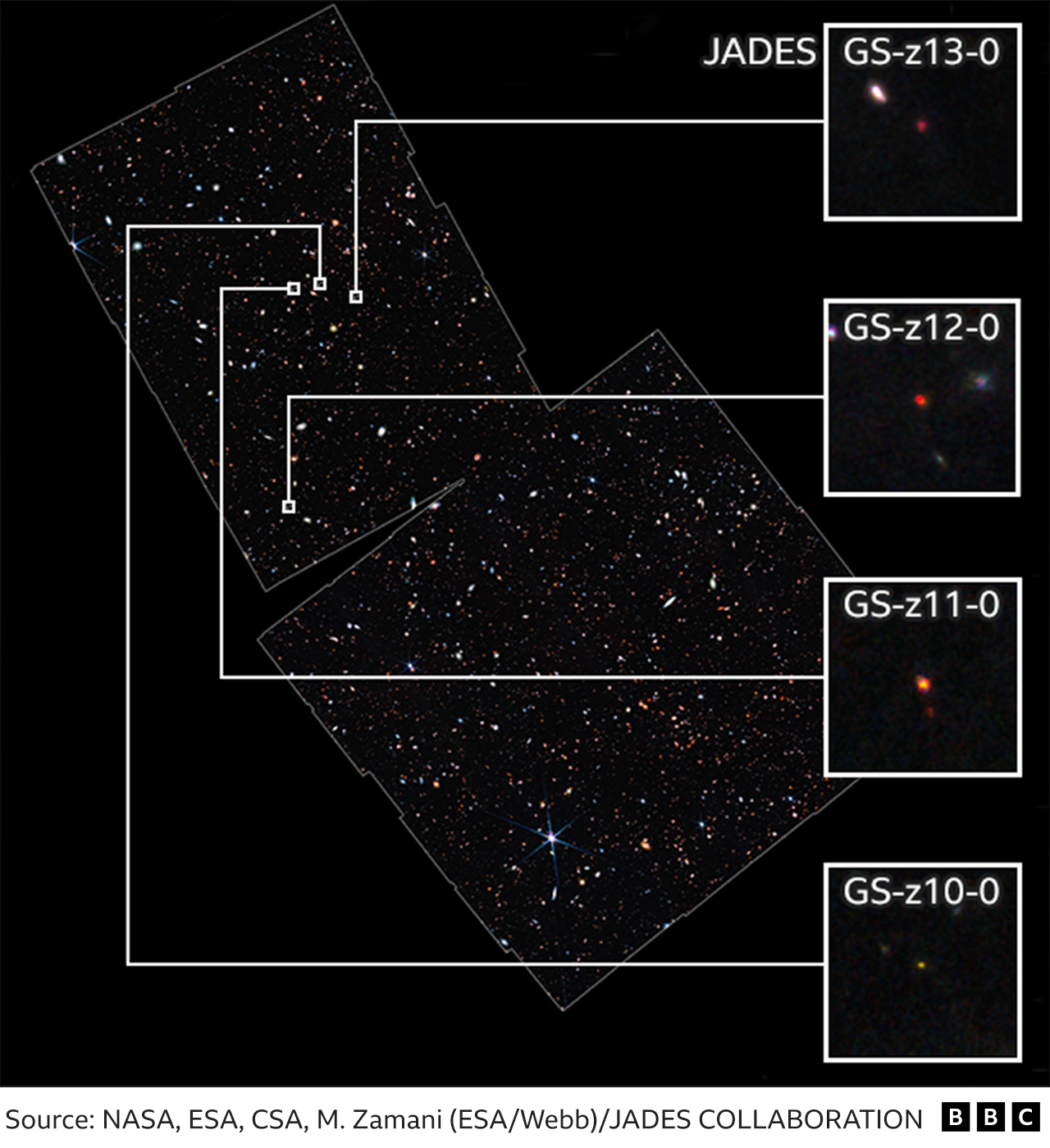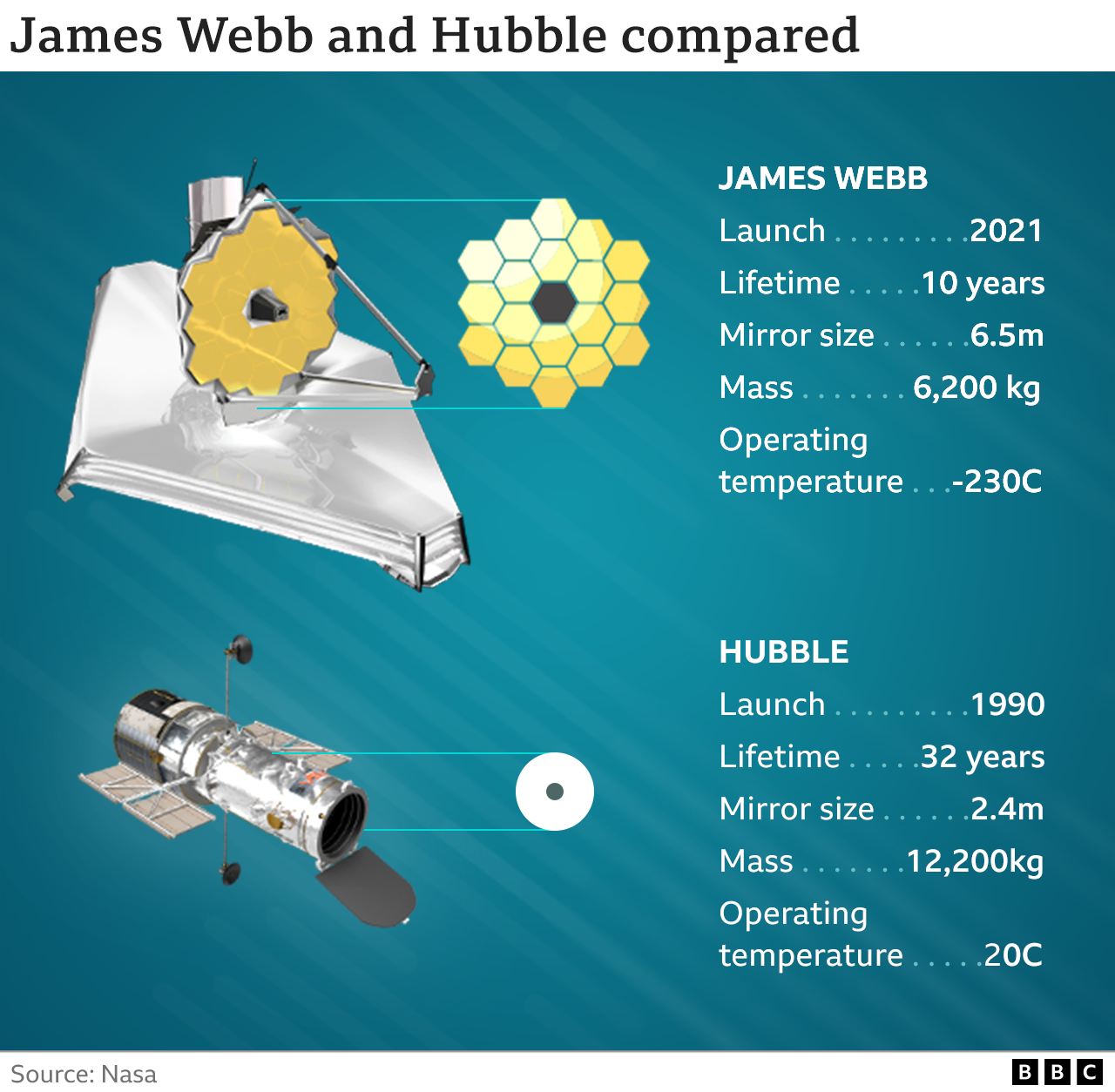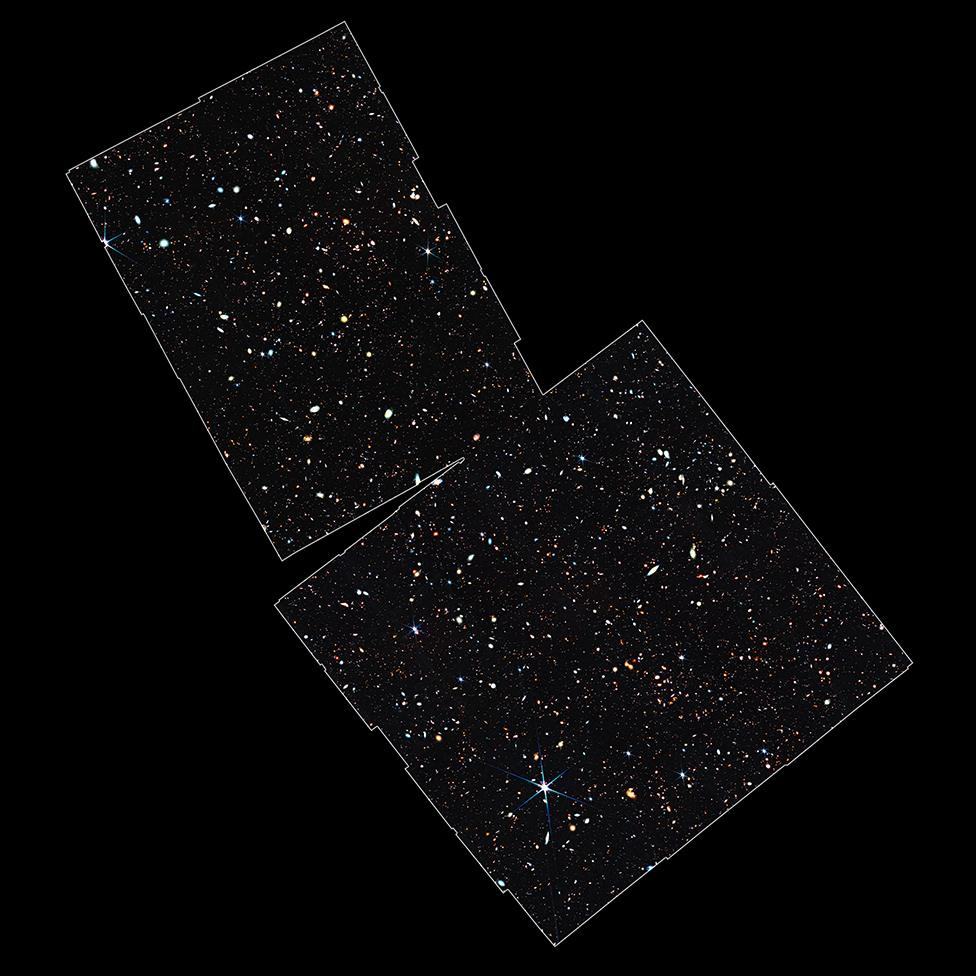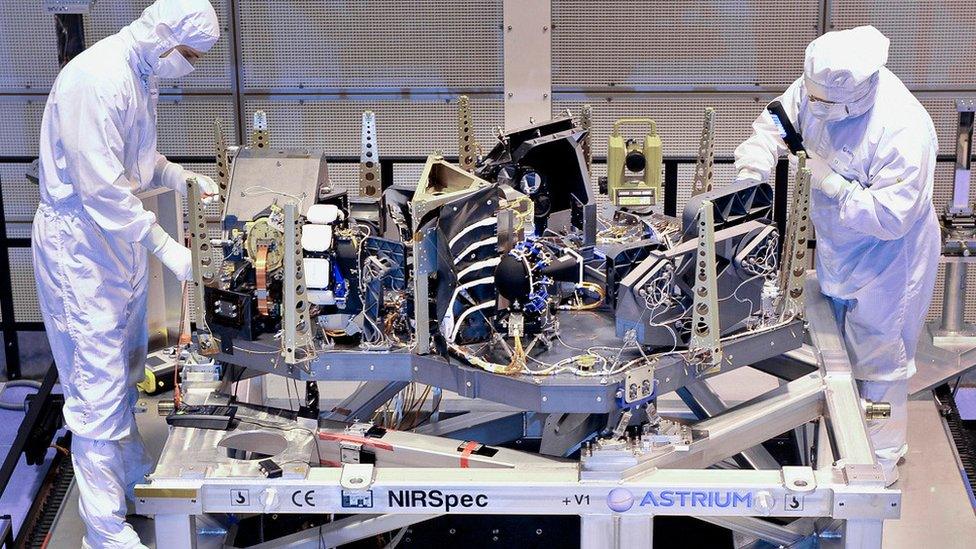James Webb Space Telescope 'fingerprints' earliest galaxies
- Published

It's not much to look at - just a little red blob with the rather quirky name of JADES-GS-z13-0.
But this faint smudge, imaged by the James Webb Space Telescope, is the "most distant galaxy" so far confirmed by gold-standard measurement.
We're looking at this collection of stars as it was a mere 325 million years after the Big Bang.
Put another way - if the Universe is 13.8 billion years old, it means we're observing JADES-GS-z13-0 when the cosmos was only 2% of its current age.
The light from this blob has been travelling towards us for a very, very long time.
"I'm actually in awe and incredibly grateful to be part of this moment," said Dr Emma Curtis-Lake, who is part of the international team that published details, external of the discovery on Friday, external.
The significance is not lost on the University of Hertfordshire, UK, astronomer.
Our previous "most distant galaxy" was detected by Webb's predecessor telescope, the veteran Hubble space observatory. It spied the equally quirkily named GN-z11. This galaxy was seen to be a little closer to us, at a time when the Universe was only 400 million years old.
But the big deal here is that the baton has truly now been passed from Hubble to James Webb, from one great telescope to the next great telescope, as scientists seek to trace the earliest epoch of star formation.
Indeed, the US space agency Nasa's recently launched Webb observatory has been given the primary objective of finding the very first stars to light up the cosmos.
JADES-GS-z13-0 isn't quite from that time, but we're getting very close to it.
This is where a hand goes up to ask: But weren't there reports over the summer of Webb observations that are even more distant than JADES-GS-z13-0?

The answer is - "maybe", and the uncertainty rests on the difference between the techniques used to make a distance determination.
Astronomers will use the term "redshift" to describe distances.
It's essentially a measure of how the light coming from a far-off galaxy has been stretched to longer wavelengths by the expansion of the Universe.
The greater the distance, the greater the stretching - giving a higher redshift number (the JADES galaxy has a redshift of 13.2; the clue's in the name).
Scientists can get reasonably good estimates by studying, in broad terms, the brightness and colour of their targets using a few specific filters on their camera. This technique is called photometry.

Distinctive big jumps or "breaks" in the spectrum of a galaxy can make it brighter and darker in the various filters and give an indication of its distance.
It's only a guide, however, and isn't always reliable.
If there's a lot of dust in a galaxy, it can make the object look redder and a lot further away than it really is.
To get the best measure, astronomers prefer to use spectroscopy, a more detailed technique in which the light signal is split up into its component wavelengths.
This allows them to get a better handle on where the "breaks" are in the galaxy spectrum and also to see emission lines from elements such as hydrogen, oxygen, and neon.
Comparing their measured wavelengths with those known from lab experiments gives a direct indication of how much the light has been stretched and thus the redshift and distance.
Both JADES-GS-z13-0 and GN-z11 have been confirmed through spectroscopy, the gold-standard approach. The higher redshift numbers you may have seen reported in recent months are all based on photometry.
This is difficult work all round. The targets appear extremely faint even to Webb and its giant, 6.5m-wide mirror.
Dr Curtis-Lake and her JADES (JWST Advanced Deep Extragalactic Survey) colleagues spent hours collecting a mosaic of images in an old Hubble field of view.
"It's an incredibly small patch of sky - equivalent to viewing the eye of the Queen on a pound coin held at arm's length," said Dr Renske Smit from Liverpool John Moores University. "But within that patch, Webb sees 10s of thousands of galaxies."

The JADES field repeats old Hubble observations but goes much, much deeper
The new space telescope carries an incredibly powerful near-infrared spectrometer (NIRSpec) provided by the European Space Agency. It's NIRSpec's job to do the detailed analysis of the faint light signals.
It uses a remarkable shutter array - a collection of 250,000 tiny doors, each only a few human hairs in width - to select the objects for study.
Within the "Queen's eye", the team chose 250 promising candidates, four of which turned out to be at stupendous distances.
JADES-GS-z13-0 was the furthest away, but JADES-GS-z12-0, JADES-GS-z11-0 and JADES-GS-z10-0 weren't that far short.

NIRSpec was a major European contribution to the James Webb project
"This is what JWST was built to do and the European-assembled NIRSpec instrument lies at the heart of it," commented Prof Mark McCaughrean, Esa's senior scientific advisor.
"The search for 'first light' in the Universe needs a large, cold space telescope and a sensitive infrared camera to identify things that might be faint galaxies forming just a few hundred million years after the Big Bang.
"But there's a lot of hay and not many needles, so you have to look at many candidates, smearing out the tiny amount of light from each one into a spectrum and using tell-tale tracers to see if they have the right distance and age. By being able to efficiently examine hundreds of targets at a time, NIRSpec brings a kind of cosmic magnet to the haystack," he told BBC News.
